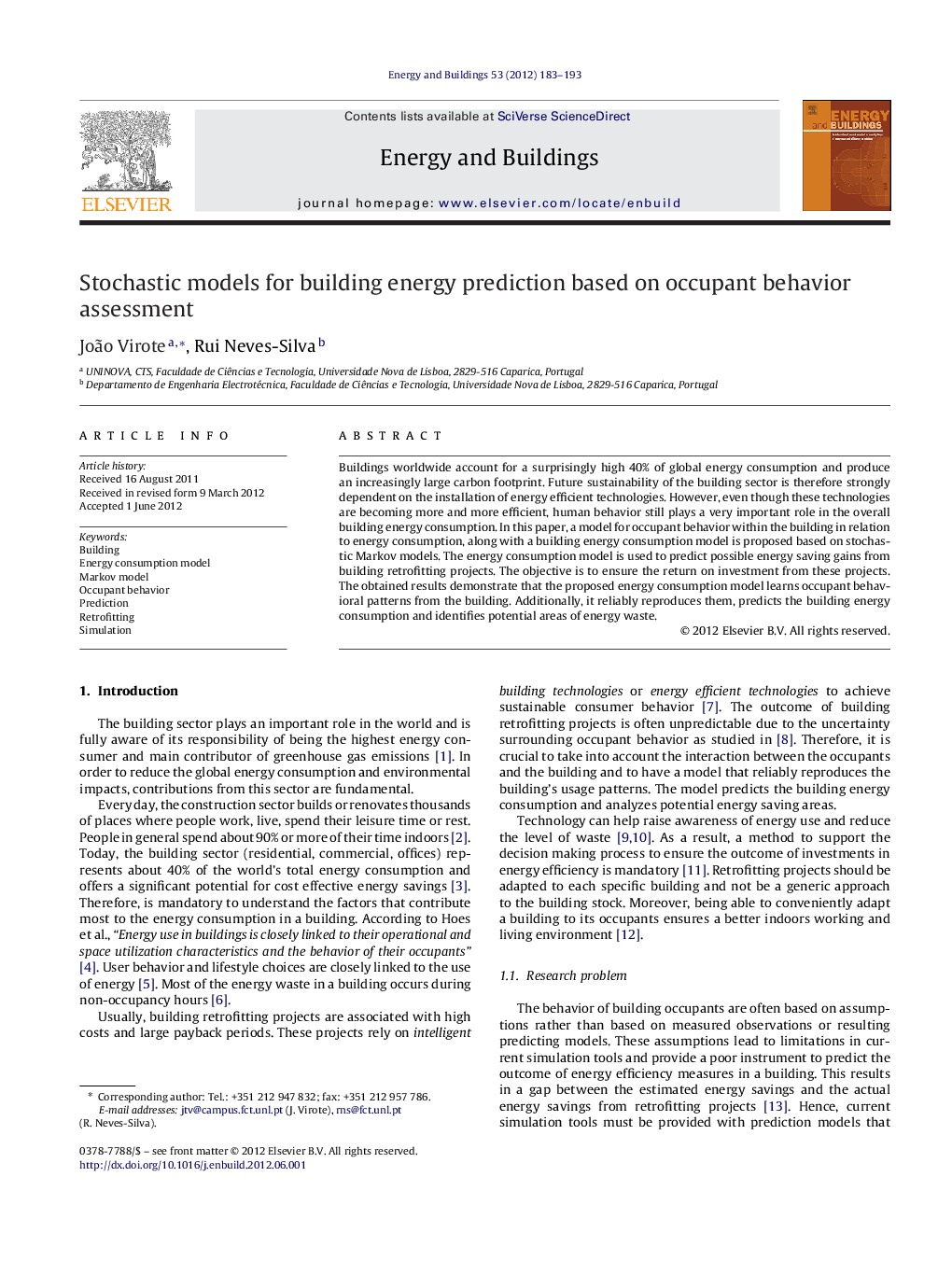| Article ID | Journal | Published Year | Pages | File Type |
|---|---|---|---|---|
| 263709 | Energy and Buildings | 2012 | 11 Pages |
Buildings worldwide account for a surprisingly high 40% of global energy consumption and produce an increasingly large carbon footprint. Future sustainability of the building sector is therefore strongly dependent on the installation of energy efficient technologies. However, even though these technologies are becoming more and more efficient, human behavior still plays a very important role in the overall building energy consumption. In this paper, a model for occupant behavior within the building in relation to energy consumption, along with a building energy consumption model is proposed based on stochastic Markov models. The energy consumption model is used to predict possible energy saving gains from building retrofitting projects. The objective is to ensure the return on investment from these projects. The obtained results demonstrate that the proposed energy consumption model learns occupant behavioral patterns from the building. Additionally, it reliably reproduces them, predicts the building energy consumption and identifies potential areas of energy waste.
Graphical abstractFigure optionsDownload full-size imageDownload as PowerPoint slideHighlights► The building's occupant behavior influences the outcome of retrofitting projects. ► Measured building performance data is important to create an energy consumption model. ► Markov stochastic models reproduce the space occupancy patterns and the occupant's behavior. ► The proposed energy consumption model reproduces the building's occupancy patterns. ► The proposed energy consumption model predicts the building energy consumption.
